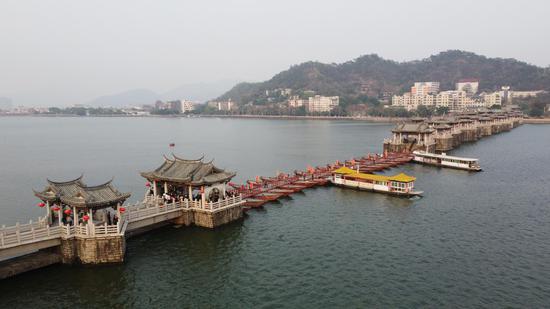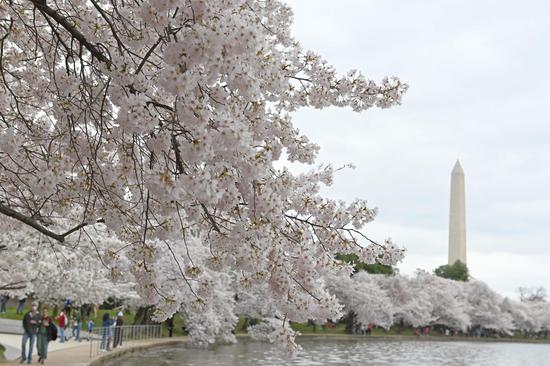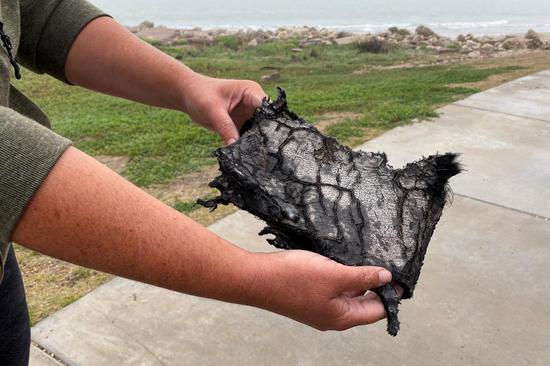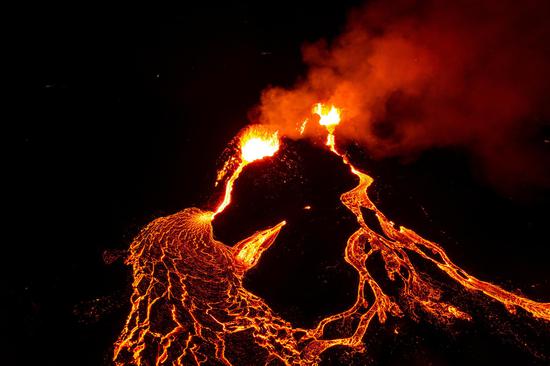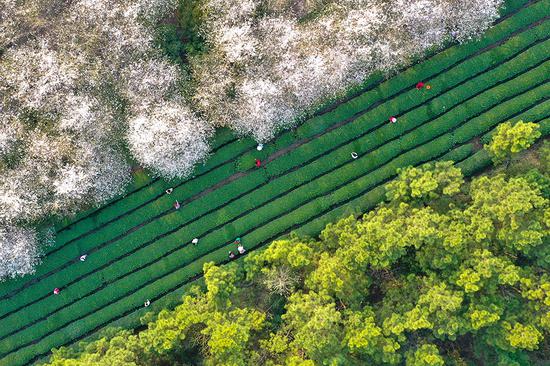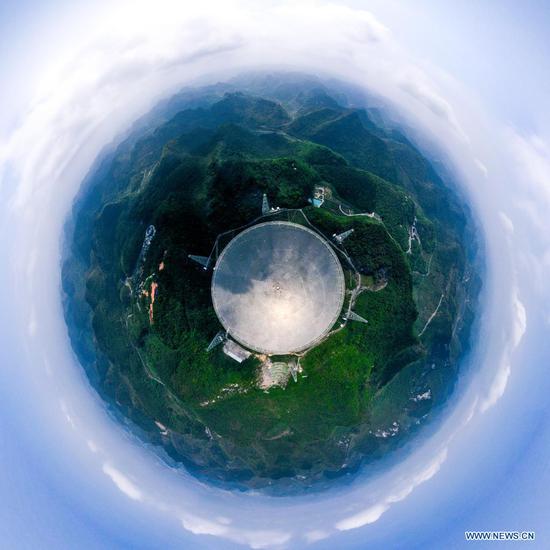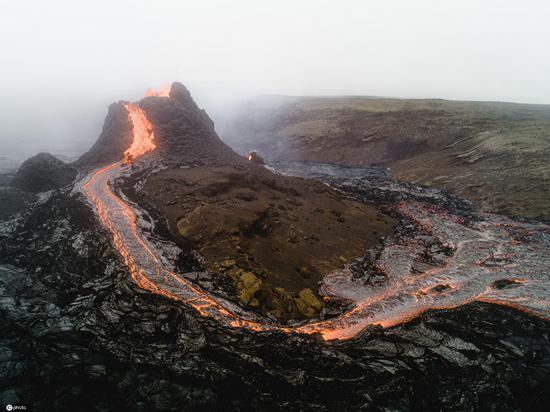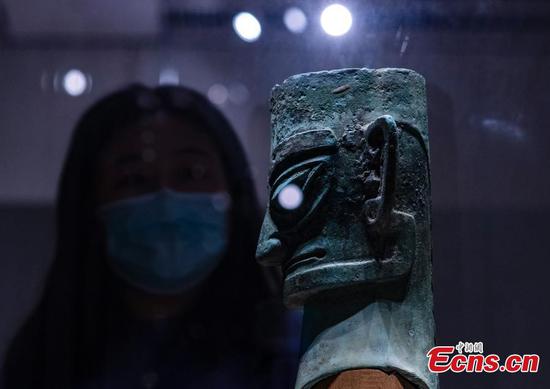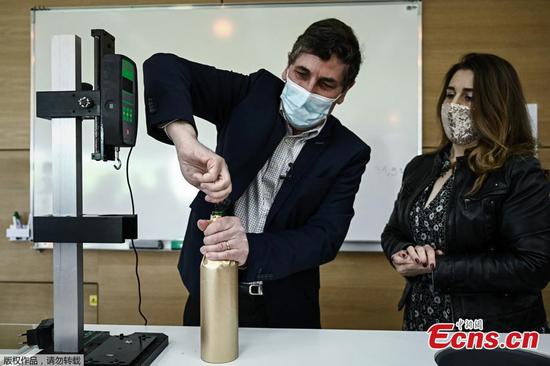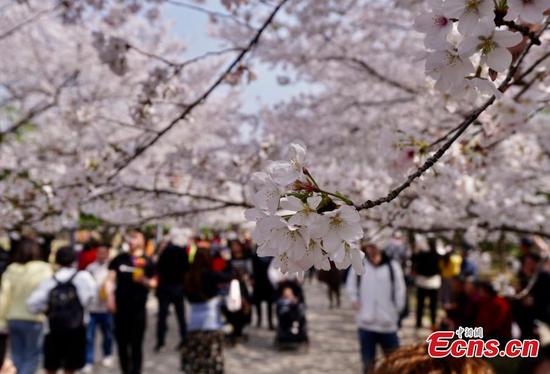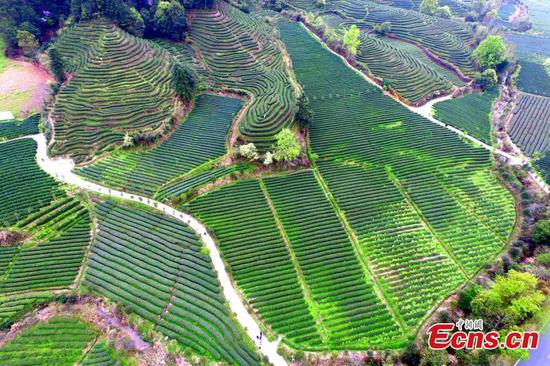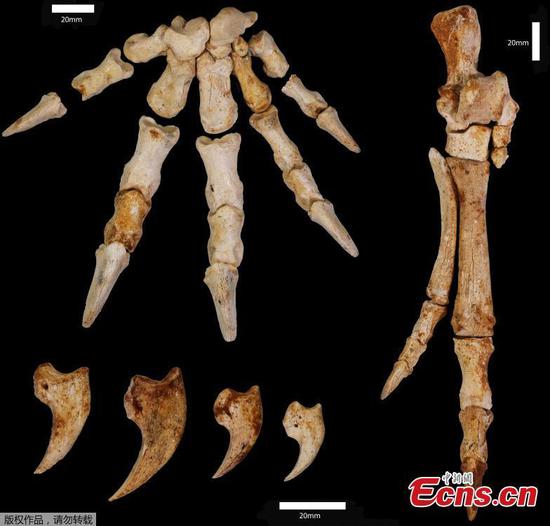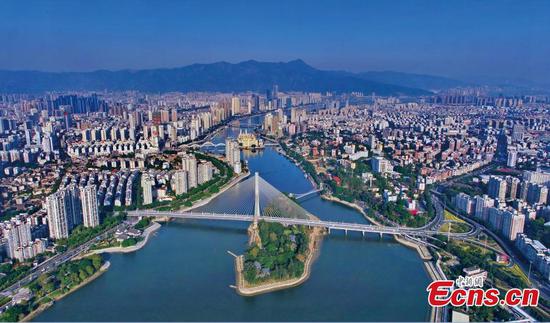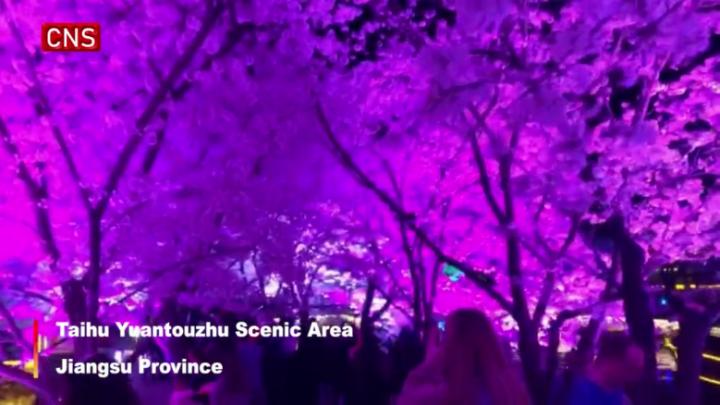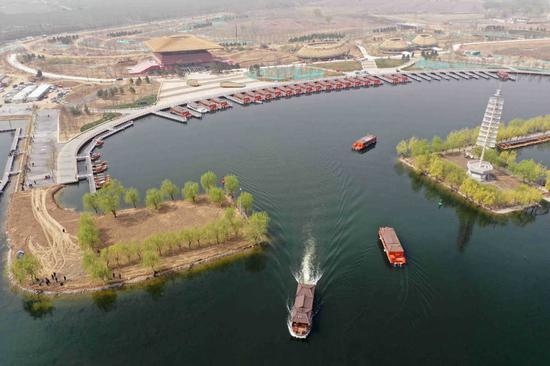
Baiyangdian Lake, in Xiong'an New Area, on Wednesday. (XINHUA/XING GUANGLI)
Area suffered from inadequate supply due to climate change, human activity
China has diverted 2.69 billion cubic meters of water, roughly 190 times the volume of Hangzhou's West Lake, to help rejuvenate aquatic ecosystems in Xiong'an New Area, a senior official from the Ministry of Water Resources said.
Yang Derui, director-general of the ministry's water resources management department, said the ministry is also promoting the building of a reservoir and other facilities to guarantee adequate water supply to the area, with water coming from the country's two longest rivers — the Yangtze and Yellow.
He made the remarks exclusively to China Daily ahead of Thursday's fourth anniversary of the establishment of the area in Hebei province.
Yang said the efforts to divert water to Xiong'an were part of the country's endeavor to address the depletion of underground water resources, subsidence and the shrinkage of water bodies in North China, all resulting from excessive exploitation of underground water since the 1980s because of water shortages caused by climate change and increased human activity.
Twenty-two rivers and lakes have been covered by the diversion initiative since 2019. It aims to boost the conservation of aquatic ecosystems in the region. Six of the rivers run across or are located in Xiong'an, he said.
By last year, 8.54 billion cubic meters of water had been diverted to North China, "injecting strong vitality to rejuvenate ecosystems in lakes and rivers in the region, particularly those in Xiong'an", Yang said.
Thanks to the efforts, lucid water had returned to several rivers that had been dry for years and the vegetation on their banks had also recovered, he said.
He said Baiyangdian Lake in Xiong'an, North China's largest freshwater wetland, had expanded by about 24.1 percent between 2017 and 2019.
"The water quality in Baiyangdian has been effectively improved," he said, adding that chemical oxygen demand, one measure of water quality, had dropped by almost 5.3 percent year-on-year in the first nine months of last year.
Yang said that aside from ramping up water diversion efforts, the ministry will roll out a series of measures to meet water demand that emerges as the construction of Xiong'an forges ahead.
The construction of a reservoir with a pumped-storage power station was launched last year. The facility will not only ensure a stable water supply to Xiong'an but also help the new area consume more of the intermittent solar and wind energy generated in nearby Zhangbei county, he said.
The amount of water provided by the middle route of the South-to-North Water Diversion Project changes with the season. By storing water during the wet season, the reservoir, with a capacity of 250 million cubic meters, will address the unstable supply and any interruptions caused by maintenance or accidents.
The reservoir could help ensure the supply of 300 million cubic meters of water to Xiong'an a year, on average.
"After it goes into operation, the demand for water supply for production and living can still be effectively met even during the three months every year when the operation of the route's trunk channel is routinely suspended for maintenance," Yang said.
He said the ministry will also facilitate the construction by local governments of a trunk channel that will divert water from the reservoir and the establishment of a water supply network in the new area.










